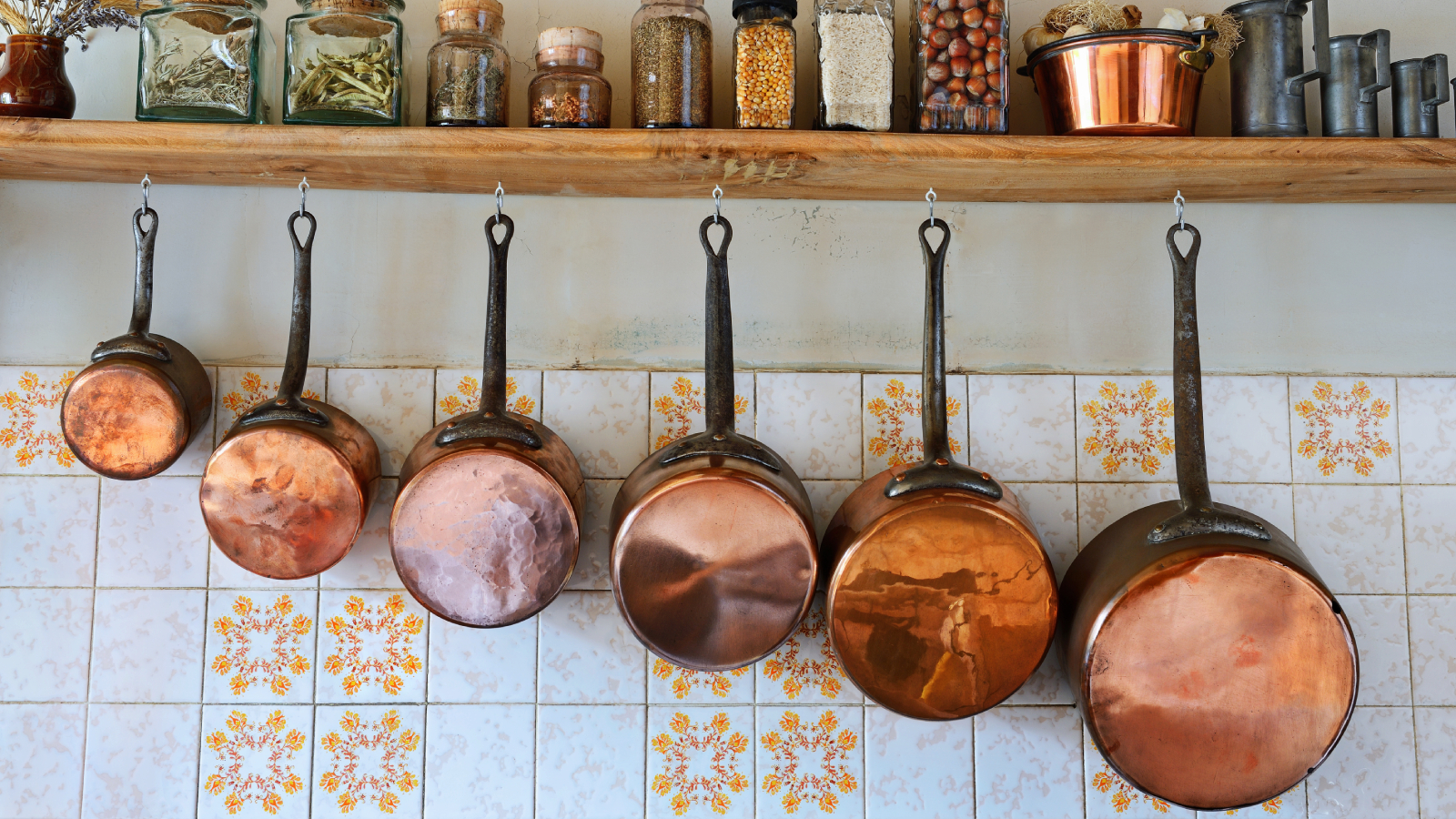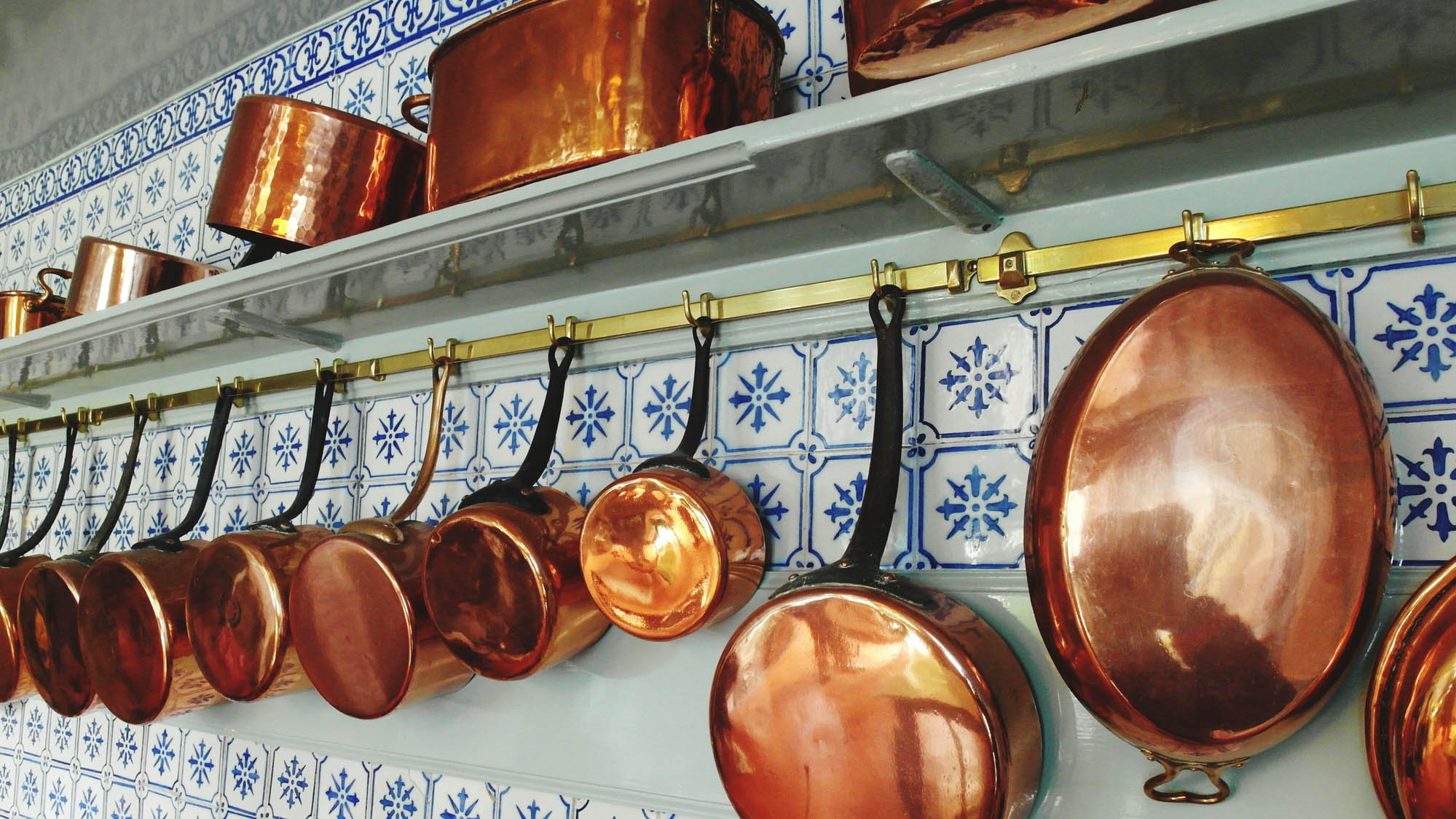How to clean copper to keep your kitchen pans looking as good as new
Understanding how to clean copper isn't difficult, but it's important to use the right materials so you don't damage your pans

Learning how to clean copper is an easy but essential skill any home chef should know.
Copper is a favorite amongst gourmet and casual cooks alike. It conducts heat more evenly than any other material, and like a cast iron skillet, only improves with use. A notable difference from cast iron, which requires careful cleaning, is that copper is a snap to keep shiny and bright...
How to clean copper: three natural cleaning methods
Many home chefs buy copper cookware but are then reluctant to use it, as there are some concerns around how to clean copper effectively. Some people worry about cleaning up baked-on food without damaging the copper finish or scrubbing away the lining until the copper leaches into the food. The reality is that the lining of copper pots is actually very durable, making this type of cookware suitable for daily use.
You'll be pleasantly surprised at how simple it is to learn how to clean copper, and you don't have to buy special pads or cleaners. Instead, use items that you've already stashed around the kitchen anyway. Most of the best cleaners are non-toxic and often organic, keeping your kitchen safer with fewer hazardous chemicals. The real secret to gorgeous, shining kitchen copper, though, is salt. Other ingredients and tools to keep handy include:
- Lemons
- Baking soda
- Vinegar
A soft cloth or brush is best for scrubbing, and kitchen gloves (an essential part of any kitchen cleaning routine) are also helpful if you want to protect a fresh mani. Safe, food-based ingredients mean you can even invite your mini helpers to join in on the fun, when figuring out how to clean copper.
1. Method one: salt and lemon
Like some of your favorite cocktails, all you need is a little lemon and salt if you want to know the best way to clean your copper. Cut a lemon in half, then dip it into a small plate of salt. Rub the lemon into the pan until the leftover bits are gone. Finish by rinsing with hot water.
If you have caked-on food that the lemon won't pick up (after all, knowing how to clean a burnt pan is a pain for all of us), squeeze the juice of a lemon into a bowl, add salt (use the inexpensive stuff for cleaning, please!) to make a paste, then apply the paste to the copper and let it sit a few minutes. Scrub with a cloth, and voilà! Rinse with hot water and pat dry. The paste will also remove any stains, including stubborn tomato sauces.
Sign up for the woman&home newsletter
Sign up to our free daily email for the latest royal and entertainment news, interesting opinion, expert advice on styling and beauty trends, and no-nonsense guides to the health and wellness questions you want answered.
Lemon and salt is also a fantastic option for learning how to clean aluminum, too.
2. Method two: baking soda and lemon
If your kitchen is only stocked with fancy Celtic truffle or pink Himalayan crystals, you can use baking soda instead to create the same paste.
Just as you did with the lemon and salt mixture, all you need to do is squeeze the juice of a lemon into a bowl, add the baking powder, mix it to form a paste, and then apply it to your pan. Leave a few minutes, scrub with your cloth, and then rinse.
Like salt, baking soda is abrasive enough to clean up the tough stuff without damaging the finish. It's what makes it a great kitchen essential for learning how to clean all sorts of things–such as how to clean an oven, how to clean grout, and how to clean a stainless steel sink. Keep a stash of plain inexpensive baking soda and stow it in the closet with your cleaning supplies. Baking soda, in particular, is a superb substitute for other abrasive chemical cleaners.
A vinegar and salt combo will make a copper pan shine like it's brand new. Follow these three steps for beautiful copper cookware:
3. Method three: white vinegar
- Coat the pan in salt or baking soda, add vinegar instead of lemon, and then add another salt or baking soda layer.
- Put the pot in the sink and wait for the magic to happen; about fifteen minutes.
- Pour some vinegar onto a soft sponge and scrub away.
This method provides the strongest chemical reaction and, therefore, the shiniest result when it comes to considering how to clean copper. That said, not everybody loves the stringent scent of vinegar. If the aroma is too much for you, opt for the lemon and salt method.
Now that your copper pan is almost as shiny as a mirror, use a fresh soft cloth to buff it into an even higher shine. Make sure you've polished out any leftover streaks and residue.
And there you have it–a clean copper pan that looks brand new.
How to take care of your copper in between cleans

Copper pots and pans are super heat conductors, spreading the heat evenly along the bottom and sides. Copper cooks your food a lot faster and will cool down just as quickly. It is perfect for recipes where temperature needs to be closely controlled.
While copper cookware is a versatile, easy-to-use kitchen tool, there are some essential don'ts to keep in mind to make sure you keep your cookware in great shape between cleans:
- Don't preheat the pan. Heating an empty pan will discolor the metal.
- Don't turn the burner up too high. Since copper is such an excellent heat conductor, you can cook at a lower temperature. A good rule of thumb is half the heat you would use with stainless cookware or your best induction pans.
- Don't use metal utensils that can scratch the metal. Opt for wood or silicone spoons and spatulas.
- Don't use copper on induction hobs. In the induction hob vs gas hob debate, this is one pro for gas hobs—as copper pans won't work on induction.
- Don't assume all copper pans are oven-safe. A pan lined with stainless steel is okay up to 500C, but a tin lining can only withstand 450C.
- Don't use scouring pads or abrasive sponges.
- Don't put copper cookware in the dishwasher. Hand-wash only, please!
Amy Hunt is an experienced digital journalist specialising in homes, interiors and hobbies. She began her career working as the features assistant at woman&home magazine, before moving over to the digital side of the brand where she eventually became the Lifestyle Editor up until January 2022. Amy won the Digital Journalist of the Year award at the AOP Awards in 2019 for her work on womanandhome.com.
